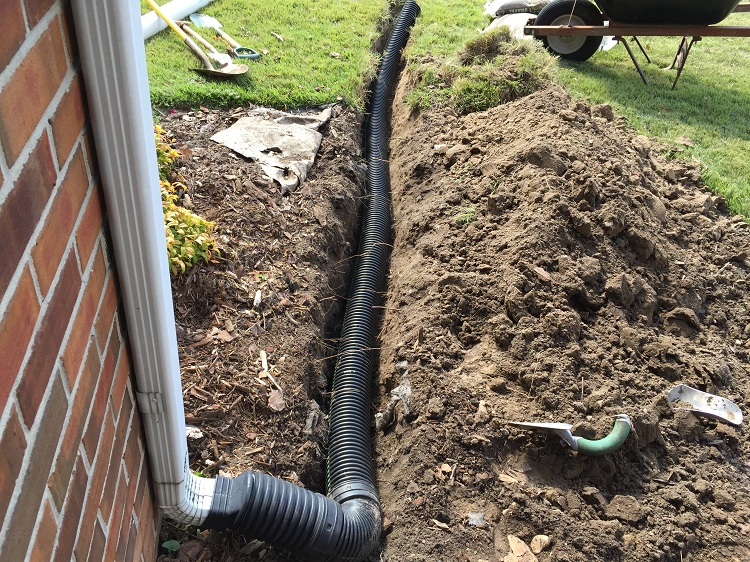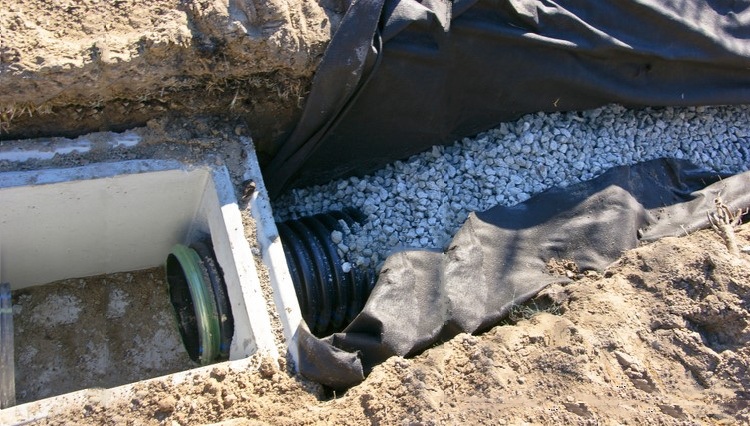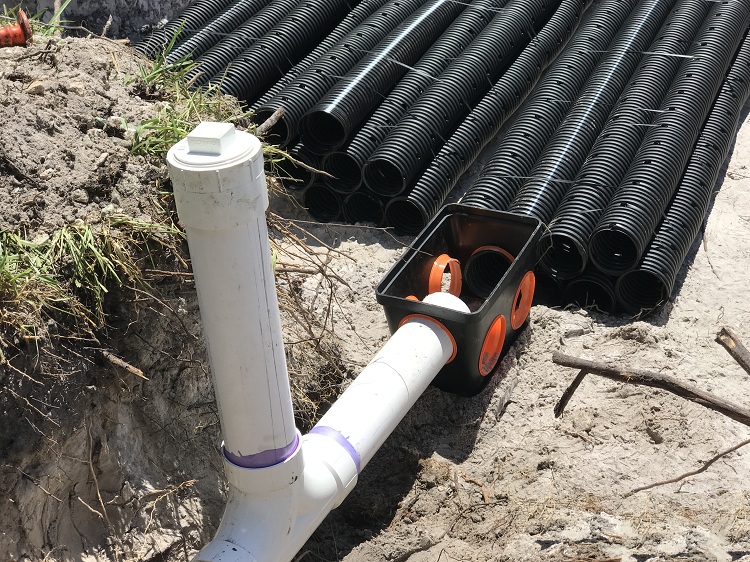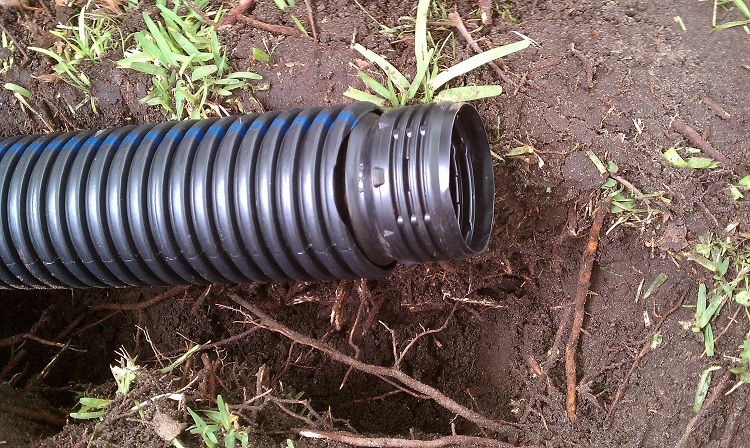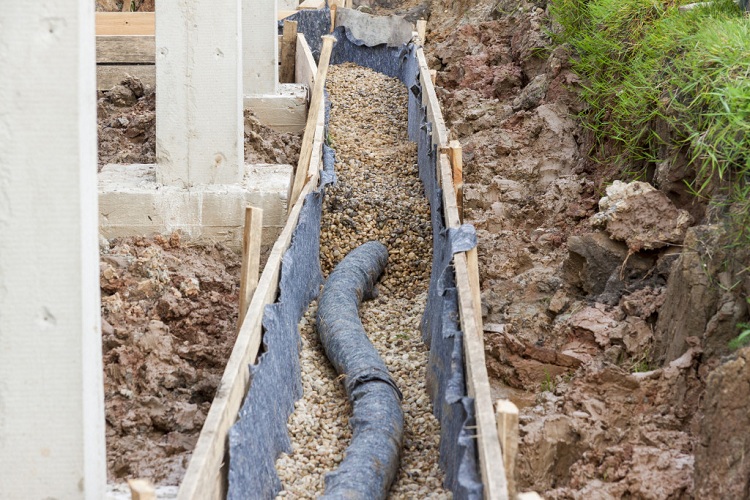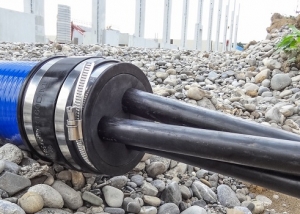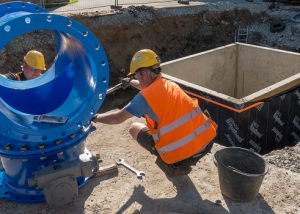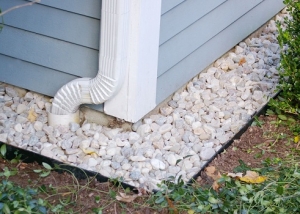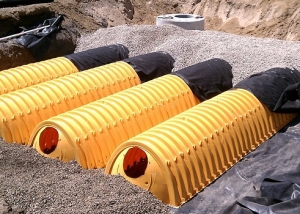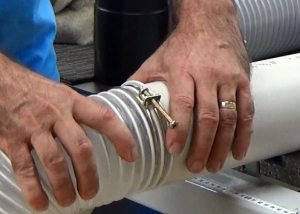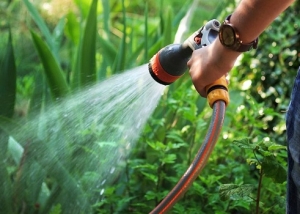The most effective way to protect the foundation of a private house from the damaging effects of storm and groundwater is a drainage system. When water accumulates in the upper soil layer, this is especially important, since its excess can lead to flooding of the basement and basement, provoke moisture in the walls with their subsequent deformation and contribute to the formation of fungal deposits. The best solution to this problem is to install a drainage system.
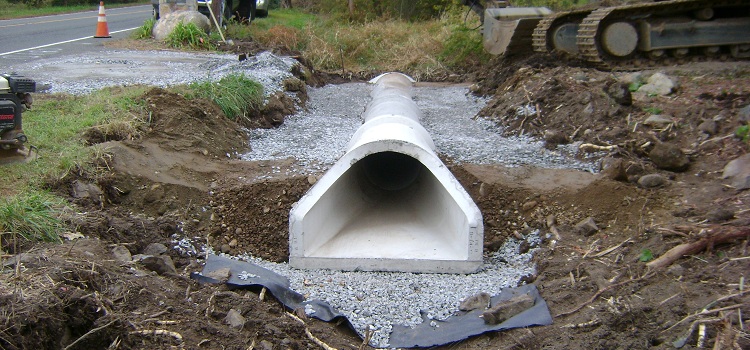
When deciding to do the drainage of the site with your own hands, you should study the rules for laying drain pipes
Content
When required
Pipes for such a system, laid along the perimeter of the entire section, provide the opportunity to create a high-quality drainage system. It is necessary to organize it because the danger of flooding is not only groundwater, but also flood waters. If the permissible limits are exceeded, atmospheric precipitation can also cause damage.
The difference from the waterproofing of the foundation in this case is the permissibility of laying pipes even after the construction of the house, if there are grounds for this. But there are certain conditions that require the implementation of such measures at the initial stages of construction:
- The shallow location of the site. This contributes to a significant accumulation of water.
- Clay as well as loamy soil. They have weak culvert characteristics.
- Statistical data. This refers to the probability of exceeding the amount of precipitation for the region in which the house is located.
- Elevated groundwater level. The distance from the soil surface is less than one and a half meters.
You should also take into account the depth of construction on the site of the remaining structures. The presence of a buried foundation near the main building not only prevents the outflow of groundwater in a natural way, but also contributes to their accumulation, which, in turn, increases the risk of flooding. The role of the barrier for the free movement of water is also played by the asphalt pavement available on the site and equipped concrete blind areas. To prevent the effects of fluctuations in the level of groundwater, as well as the accumulation of moisture in the soil around the house moisture will allow laying drainage pipes. A competent solution in this case is the connection of storm drains to the main drainage system.
Types of drainage systems. What materials will be required
Today, two options are used to equip such systems.
- Surface (open). Presented in the form of trenches and ditches. It is used to remove excess moisture arising from the accumulation of meltwater and precipitation.
- Closed (deep). Here pipes with perforation are laid in a pre-prepared trench to a certain depth. The main functions are the protection of the foundation of the house and the removal of groundwater.
An open system is optimal if the water floods the site only a little, or not enough. Then experts recommend reservoir drainage without laying pipes. Work on its implementation involves the formation in the ditch or trench of two layers - one of gravel, and the second - sand.Together, they form a layer that passes water well.
On a note! The ditch should have a slope of the order of three centimeters per meter of its length.
From the materials you will need:
- gravel. The optimal particle size of this material is 20-40 millimeters. If necessary, gravel can be replaced with crushed stone of medium or large fractions. Large clods of soil and dirt do not penetrate through it;
- sand. It should be taken from the banks of the rivers. Sand is used for arranging trays. An important requirement is that it must be large. The advantage of this material lies in the fact that with sharp temperature extremes its shape does not change.
For the deep drainage system, the same gravel and sand will be required. But here they, in addition to the above, perform other functions. Crushed stone eliminates excessive soil pressure on the pipe, and sand creates a kind of filter pad around the drainage pipeline.
You will also need the following materials and equipment:
- geotextiles. Designed to protect the perforated tubular element of the system from soil contamination. Dornite or flazelin is commonly used. Both types of textiles, in addition to strength, have a filtering ability;
- drainage pipes. The formation of a drainage system is carried out on their basis. Diameter and quantity are affected by the complexity of the bookmarking method;
- couplings. These parts are used to fasten the above system elements to each other;
- drainage pumps. They are used only in case of significant flooding of the garden plot with underground waters.
For periodic cleaning of the drainage system, which, as a rule, is indispensable, inspection wells must be installed along its perimeter. And in order to ensure the collection of water in the system, a collector well is arranged.
To work, you must have at hand the following tools:
- a pickaxe;
- shovel;
- bayonet shovel;
- a wheelbarrow for transporting sand and gravel.
Drain pipe selection
First of all, you should know that to create a drainage system, it will be necessary to install a perforated drainage pipe. The second thing we pay attention to when choosing is its diameter. An equally important characteristic applicable to the drainage pipeline is the raw material from which it was made. According to this criterion, in the building materials market, one can find pipes of the following types:
- from polymeric materials;
- ceramic;
- asbestos cement.
The most popular products of the first type. And this is not surprising, since polymer pipes have the following advantages:
- the service life can reach 70 (!) years;
- resistance to aggressive environment and corrosion resistance;
- due to its light weight, transportation and installation are not difficult;
- resistance to siltation;
- thanks to a smooth surface, polymer pipes are capable of self-cleaning;
- ease of maintenance. This advantage is due to the presence of a geotextile filter;
- reasonable value for the price / quality ratio.
A few numbers regarding the diameter of the pipes.
- Up to 300 millimeters for a large water discharge system.
- Up to 150 millimeters for a system operating under light load.
Advice! To create the main drainage line, use large diameter pipes, and for branches - small ones.
Varieties of plastic drainage pipes
It was said above that these products are now very popular. Therefore, it is worth considering them separately.
Polymer pipes are used, used when laying drainage systems, as a rule, from polyethylene, polypropylene and polyvinyl chloride. Modern industry produces the following types of these products:
- corrugated or smooth;
- pipes with or without filter sheath. Drainage pipes usually already have holes along the entire length. But if they are not in the purchased products, special holes can be made using a drill and a small diameter drill;
- flexible and rigid. On the basis of the first, a complex branching is created throughout the site. But rigid pipes are used to create simple drainage schemes;
- single or double layer pipes. When choosing the number of layers, the density of the soil must be taken into account.
A few words about textile coverage. The construction market presents samples, usually already covered with geo-fabric. If uncoated products were purchased, you can wrap their surface yourself. To do this, it is enough to fix the material around the perimeter of the pipe with a thin wire or rope.
We create a drainage system with our own hands
First, you need to develop a plan for the placement of drainage pipes in a particular area, taking into account the level of groundwater and the type of soil. Most often, a branched scheme is used, in which installation is carried out at the joints of the inspection wells. The distance between the branches is selected according to the type of soil. So, for sandy soil it will be 45, loamy - 20, and for clay - 10 meters.
Self-laying of the drainage pipe begins with the determination of a specific installation site. Two accommodation options are possible: drainage around the perimeter of the entire house area. Allows you to protect green spaces, and utility buildings, and the basement of the building; “Wall” drainage system. It is laid around the perimeter of the foundation of a private house and prevents moisture from getting inside.
The sequence of stages of installation works looks like this:
- the area where drainage ditches will be laid is marked. The use of a laser rangefinder will greatly facilitate starting actions. But you must do this by paying attention to the excess water accumulated after the rain. They clearly demonstrate the fact of the complexity of water exchange due to existing obstacles or increased soil density.
- a drainage trench is being prepared taking into account elevations. Deepening is required for unobstructed and rapid outflow of water.
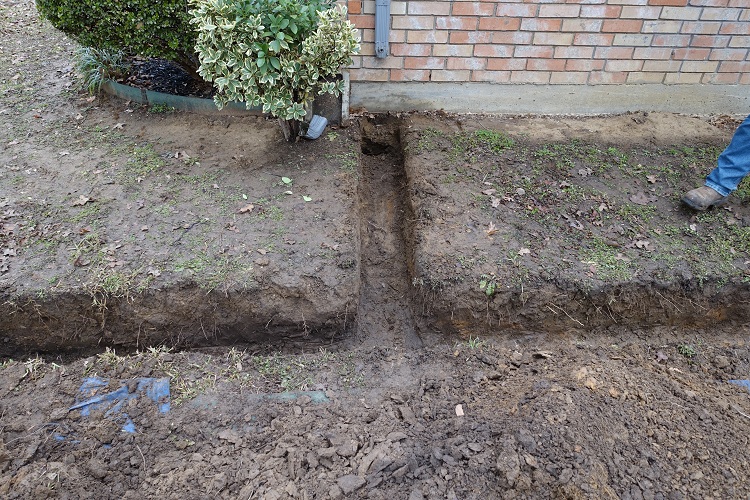
The trench in which the pipes will be placed should be excavated with a slight slope towards the water collection point
Advice! Use a watering hose during operation. Filling the trench with a small amount of water, you will see how easily the liquid leaves the recess along the entire length of this ditch.
- Before installing the drainage pipe, the bottom of the ditch is carefully rammed. Then filtering material is laid, the edges of which must necessarily go beyond the boundaries of the trench. River sand is poured from above, as well as crushed stone of various fractions. But here it is necessary to observe the following sequence: first large, and then medium. The thickness of the crushed stone layer should not be more than 20 centimeters;
- using a jigsaw or pipe saw, drainage elements are cut according to the parameters of the circuit;
- pipe products are laid and joints are joined by fittings. To create a reliable connection, the docking sections are preheated;
- pipes are wrapped with geotextiles. The joints are tightly fixed with a rope or thin wire. This is a very important stage, so you need to know in advance the methodology for laying a drainage pipe wrapped with geotextiles. The excellent throughput of this material makes it possible to absorb the liquid leaving the perforation. In addition, geofabric provides protection of perforation holes of the pipe from pollution;
- drainage must be laid with a slope with a serial connection between the ends of pipes and manholes.The latter can be equipped with two types: absorbing - the collected liquid is returned back to the soil, and pressurized - when water will be used for technical needs in the future. The slope of the drainage elements is related to the value of their diameter in inversely proportional relationship. That is, the larger the pipe section, the less the slope;
- finally, the laid drainage pipes are covered with gravel and sand. Further, the structure is covered by the edges of the insulating material lying on the surface, after which this kind of cocoon is covered with a layer of earth.
Possible errors in the arrangement of drainage
The efficiency of the drainage system and the quality of installation are interconnected. Any errors during operation can disable the drainage, and this, in turn, will necessitate the repair of the problem area or a complete reinstallation of the entire system.
The list of errors that occur during installation is quite wide. Below are the most common.
- When choosing a pipeline, soil conditions were not taken into account.
- Incorrect angle or it was not foreseen at all.
- Missing filter element or geotextile.
- Unfairly soldered pipes.
- The technology for arranging the drainage system was not observed: the installation was carried out without sand / gravel.
Properly conducting the installation of drainage, you reliably protect the basement and basement of your house from the damaging effects of wastewater.
